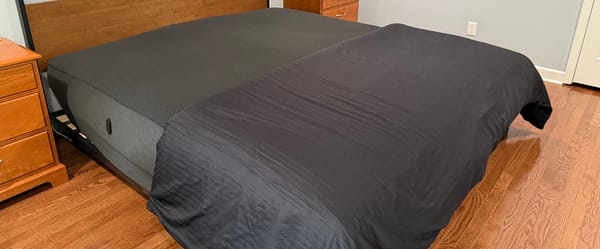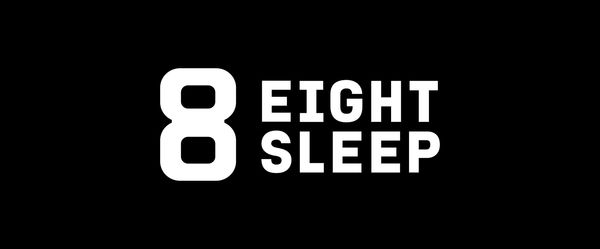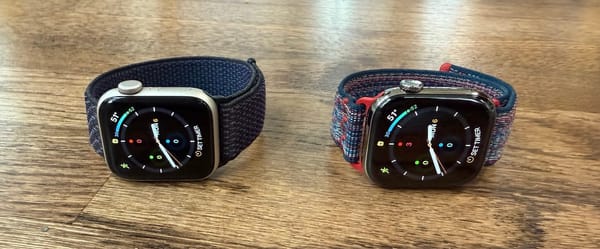Apple Watch Ultra 2 vs. Series 10 Titanium: Which Premium Model is Best?
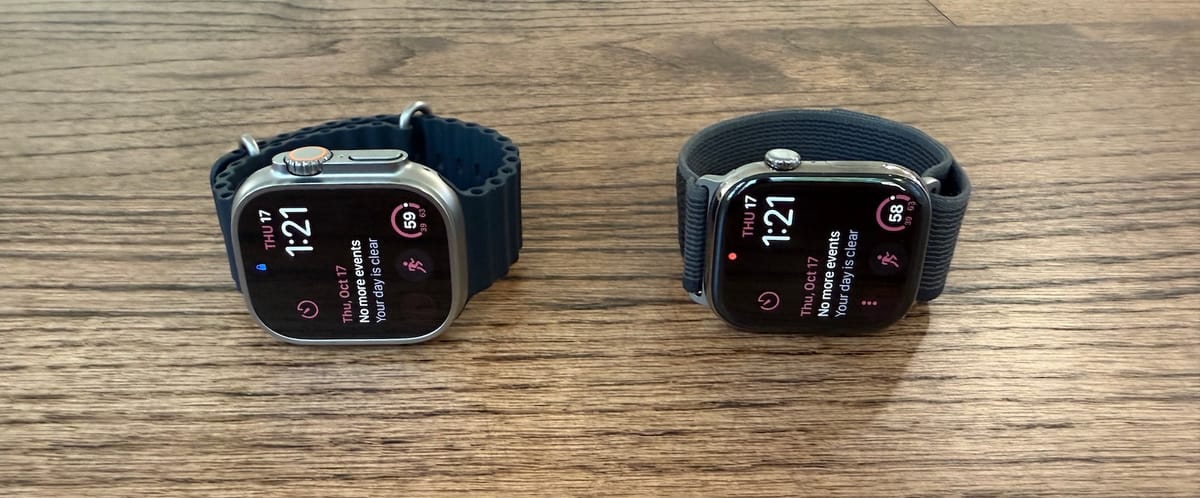
I’ve been wearing an Apple Watch on my wrist every day for ten years straight. For the last year, it’s been the Ultra 2, but for the past couple of months, I’ve been testing the Series 10 premium titanium models in both the 42mm and 46mm sizes. At the high end, these two models are priced nearly the same: the Series 10 Titanium starts at $699, while the Ultra 2 is $799.
My quick conclusion is that if you want the lightest and most comfortable premium Apple Watch, the Series 10 Titanium is hard to beat and ideal for those who prioritize sleep tracking. But if you’re after a design that parts from the classic Apple Watch and a battery that lasts twice as long, the Ultra 2 is the better play.
Here’s a breakdown of everything I’ve learned wearing both, from sleep tracking to battery life to design, and at the end I’ll tell you which model I’ll be sticking with.
Design: Classic & Comfortable vs. Bold & Rugged
The design differences between the Series 10 and Ultra 2 are likely the biggest factor for most people deciding between the two.
Series 10
The Series 10 comes in Apple’s classic watch design package, but with a few functional design changes from past generations. All of which were more noticeable than I anticipated.

Firstly, the Series 10 is about 10% thinner than last year’s models and this thickness was shaved off the bottom of the watch, which lets it sit closer to the wrist.
The stainless steel Apple watches have always been my go to because of the major bump in build quality. But the downside was that they’re heavier than the entry-level aluminum models. Instead, on the premium end, Apple went with titanium instead, which is roughly 24% lighter than the Series 9 in stainless steel.
Wearing the Series 10 all day is no problem–I hardly notice it’s there. The titanium finish comes in three different shiny finishes. But personally, I prefer the matte titanium finishes of the Ultra 2.

Despite the Series 10’s larger bezels, it delivers more pixels and a bigger screen overall, thanks to drastically thinner metal edges around the display while maintaining a similarly sized case to the Series 9 (see graphic above). And the 46mm model has the screen real estate to match the Ultra, but in a smaller package. Its design is less opinionated than the Ultra, which is good for anyone looking for a sleek, versatile design that isn’t shouting for attention.
Ultra 2
The Ultra 2, on the other hand, has a totally different feel. It’s got a rugged, flat screen, a protective shield over the digital crown and comes in two brushed titanium finishes. It feels like a more advanced and modern Apple Watch. Even though the orange accents aren’t my favorite, and I wish the bezels were smaller, if you’re trying to make a statement as an Apple fan, the Ultra helps you stand out compared to the regular watch that everyone has on their wrist.

It’s both heavier and thicker—nearly 50% more so than the Series 10. When I’m moving around during the day, I barely notice it, but lying down or relaxing? That’s when the bulk becomes obvious. I usually take it off when I’m relaxing on the couch at night. For sleep tracking, the bulk is a drawback, but I’ll get into that more below. If you like the idea of wearing something that feels more substantial, the Ultra 2’s design has a lot going for it.
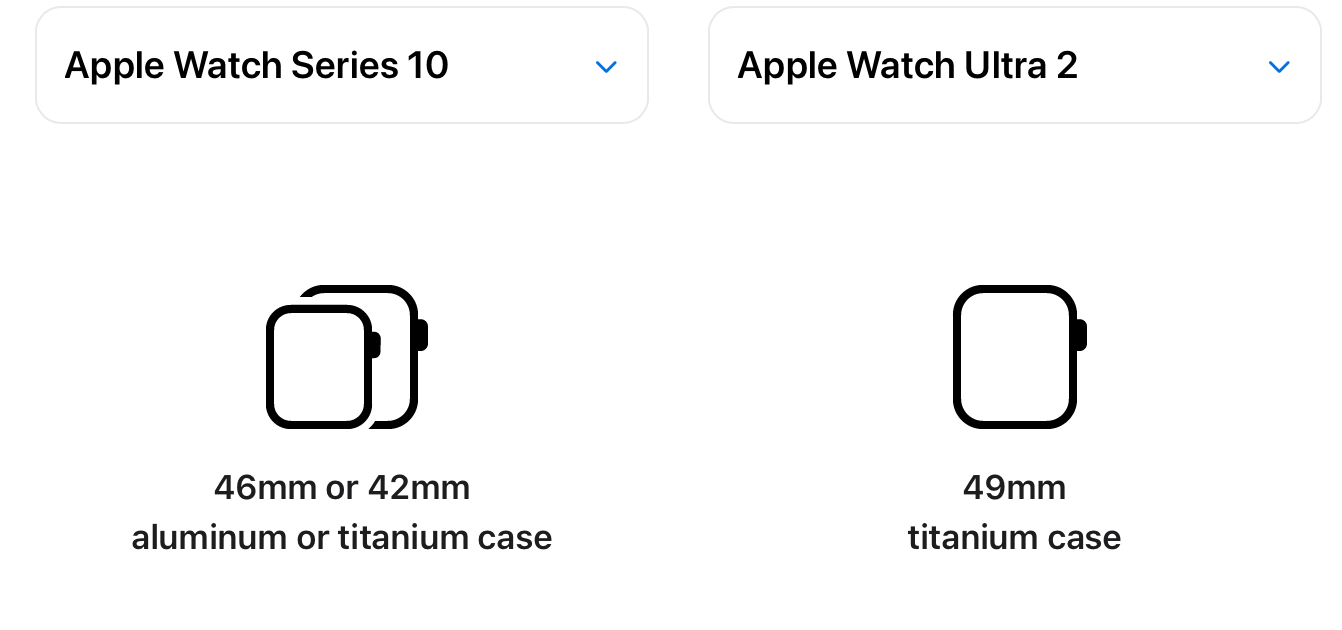
The final thing worth mentioning is that the Ultra offers an exclusive “Modular Ultra” watch face, which has a handy “night mode” that turns the face a gentle red in low light, which is perfect for not lighting up the entire room at night time. It’s a feature that added convenience to my life in a subtle but practical way.
Battery Life: How Much Do You Really Need?
Here’s where the Ultra 2 and Series 10 start to pull apart with the real-world differences.
| Series 10 (42mm) | Series 10 (46mm) | Ultra 2 | |
|---|---|---|---|
| Battery Size | 282 mAh | 327 mAh | 564 mAh |
| Runtime (AOD Disabled) | 36 hours | 40 hours | 76 hours |
| Runtime (AOD Enabled) | 30 hours | 32 hours | 63 hours |
Series 10
The Series 10 has "all-day" battery life according to Apple, which is around 18 hours. In my actual use, I get about 30 hours on the 42mm size with the Always-On Display (AOD) enabled, and 36 hours with it off. The 46mm model lasts slightly longer, about 32 hours with AOD on, and 40 hours with it off. And with quick charging, it’s easy to get a boost when I need it—30 minutes gets back to 80%, which is faster than the Series 9.
For those who want to wear their Apple Watch to bed, the Series 10 is way more comfortable. I rely on my Eight Sleep for sleep tracking, but because the Series 10 is so lightweight, I occasionally end up sleeping with it on because I forget it’s there.
Ultra 2
If you’re after a longer-lasting battery, the Ultra 2 has a huge advantage. Apple lists the Ultra’s battery runtime as 36 hours, which is twice the runtime of the Series 10. In my testing, I averaged about 63 hours with AOD enabled and 76 hours with it off. This kind of battery life is awesome if you don’t want to charge your watch every day.
As an avid closer of my activity rings, not having a charged Apple Watch is not an option. With non-Ultra models, I always pack my charger for overnight stays or trips. But with the Ultra, a single night away from home doesn’t require the charger at all. This kind of flexibility is nice, and more useful than I originally anticipated.
And while the Ultra’s battery should make it great for sleep tracking, the thickness and shape make it less comfortable. Since the watch sits higher off the wrist, I’ve noticed it sometimes gets caught on pillows if my hand is under my head, which can be annoying. Personally, if I’m not reviewing it, you’d never catch me wearing the Ultra in bed.
The Ultra’s battery also offers better longevity too. If you plan to keep your watch for 4-5 years, the Ultra is more likely to still last a full day by year five, unlike the Series 10, which will likely struggle to get through a full day by that mark. You can also enable the "Optimized Battery Charging" feature that will learn from your daily usage to determine when to charge to an optimized limit and when to allow a full charge, which will help your battery’s lifespan as well.
Overall, the Ultra’s battery can be great for those looking for maximum flexibility, but for most typical users, with a nightly charging routine, the extra runtime isn’t as critical.
Everyday Use: The Best Fit for Different Lifestyles
Apple’s target demographic for the Ultra seems to be marathoners, endurance athletes and other adventures, but I’ve found that lots of people just want the more rugged design and the extended battery life. So, let’s talk about what each watch brings to everyday life.

For the Subtle & Comfort-Focused Wearer: Series 10
The Series 10 is Apple’s most refined, versatile Apple Watch for people who value comfort and aren’t looking for something that stands out. It’s got a nice screen that flows close to the edge, and the titanium build gives it a premium feel without any extra weight.
If you’re into tracking sleep, the Series 10 is much easier to wear to bed, and the smaller 42mm size is my favorite for that.

Additionally, if premium materials aren't a priority, you can save significantly by opting for the aluminum Series 10 model at $399 (or $499 with cellular), which is half the price of the Ultra. You’ll still get all the core Apple Watch functionality without the premium build.
The bottom line is that you should get the Series 10 Titanium if you want a lighter, more comfortable watch that fits well for daily use and sleep tracking. It’s Apple’s best premium option yet for someone who just wants an all-in-one health and wellness device.
For the Bold, Battery-First User: Ultra 2
You don’t need to be running marathons to appreciate the Ultra 2’s battery life, flat screen, and durability.
There are a few other perks that we haven’t discussed yet. For example., the Action Button is useful too. I’ve set my button to open the workout app, but if you don’t use it for fitness, it’s easy to program HomeKit controls or other Siri Shortcuts.

The Ultra also beats the Series 10 in a handful of small ways, like the 3,000-nit screen (50% brighter), the built-in siren, dual-frequency GPS, and twice the water resistance. But for most everyday users, these minor extras aren’t game changers. The Series 10 actually has a better processing chip with the S10 compared to the Ultra 2’s S9, but there wasn’t a single time in real life when I noticed a difference in speed.
The bottom line is that the Ultra 2 is ideal if you’re after a watch that’s different from what everyone else is wearing and doesn’t need daily charging.
Which Model Am I Keeping?
After wearing the Ultra 2 for a year, I’ve enjoyed the Series 10’s ability to disappear on my wrist again—it’s easy to forget I’m even wearing a watch. I considered keeping it after this review and would’ve if I needed sleep tracking, but I’ll be selling it.
I still love the Ultra’s flat screen, action button, statement-making design, and the longer battery life for quick overnight trips—way more than I expected to. That said, I wouldn’t be mad about sticking with the Series 10 either; they’re both incredible watches.
If I were to keep the Series 10, I’d go with the smaller 42mm size (speaking as a male with an athletic build and average-sized wrists). Of course, this decision depends on factors like wrist size, personal preference, and body type. If lightweight and nimble is what you’re after, fully embrace it! While the 46mm is a solid choice and I wore it for a couple of weeks, if you’re aiming for maximum screen real estate, you're probably better off going all-in with the Ultra.

